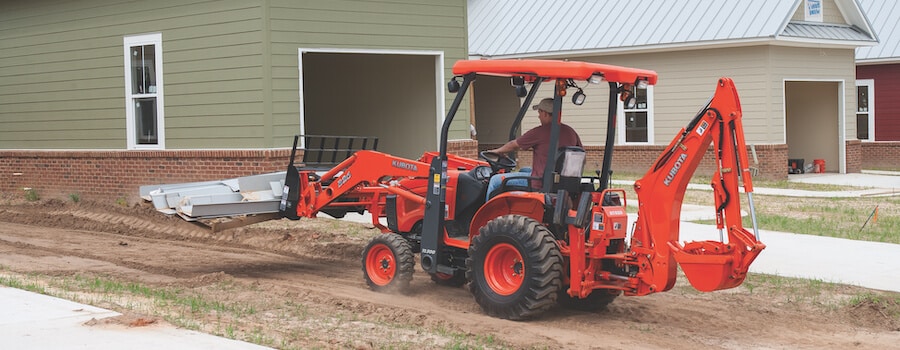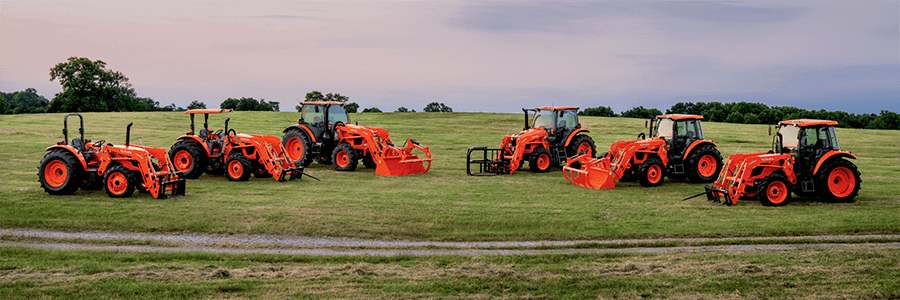
Utility tractors can do it all. But whether you’re plowing fields, hauling materials, or mowing grass, you must prioritize safety when operating these powerful vehicles. In this guide, we’ll share some valuable safety tips to ensure a smooth experience with your utility tractor.
How to Safely Operate a Utility Tractor
Prioritizing safety is key when operating utility tractors. By following these safety tips and guidelines, you can guarantee an accident-free ride with your utility tractor. Just remember to always prioritize safety, stay alert, and practice responsible operation.

1. Familiarize Yourself with the Operator’s Manual
Before operating a utility tractor, take the time to thoroughly read and understand the operator’s manual provided by the manufacturer. The manual will contain essential information about the tractor’s controls, features, and safety guidelines. Familiarizing yourself with this information will help you operate the tractor safely and effectively.
2. Conduct Pre-Operation Checks
Before starting the engine, perform a pre-operation check to confirm the tractor is in good working condition. Check the tires for proper inflation, inspect the brakes, lights, and signals, and look for any signs of leaks or damage. Address any issues promptly to prevent accidents or breakdowns during operation.
3. Wear Appropriate Safety Gear
When operating a compact utility tractor, always wear appropriate safety gear, including sturdy footwear, gloves, and eye protection. Depending on the task and environment, you may also need to wear a helmet, hearing protection, or a reflective vest. These pieces of safety gear protect against potential hazards and minimize the risk of injury.
4. Use Seatbelts
Utility tractors are equipped with seatbelts for a reason – to keep operators safe in the event of an accident or rollover. Always wear your seatbelt while operating the tractor, even if you’re only traveling a short distance. Seatbelts help prevent ejection from the tractor and reduce the risk of serious injury in case of a collision or overturn.
5. Stay Alert and Focused
Operating a utility tractor (like the Kubota M4D-071, for example) requires constant attention and focus. Avoid distractions such as using your phone, eating, or listening to loud music while operating the tractor. Stay alert to your surroundings, especially when working near obstacles, pedestrians, or other vehicles.
6. Follow Safe Hitching Procedures
When hitching implements or trailers to your utility tractor, follow safe hitching procedures to prevent accidents and equipment damage. Ensure the hitch and implement are compatible, and secure all connections with safety pins or latches. Double-check that the hitch is locked in place before towing any loads.
7. Practice Safe Maneuvering Techniques
When maneuvering a utility tractor like the Kubota M6, use caution and practice safe driving techniques. Always maintain a safe speed for the terrain and conditions, and avoid sudden stops or sharp turns that could cause loss of control. Be mindful of any inclines, slopes, or uneven terrain, and adjust your speed accordingly.
8. Keep Riders Off the Tractor
Utility tractors are designed for single-operator use, and passengers should never ride on the tractor unless there is a designated passenger seat with appropriate safety features. Transporting passengers on the tractor poses serious safety risks and increases the likelihood of accidents or injuries.
9. Shut Down Safely
After completing your work with your utility tractor, shut down the engine following proper shutdown procedures outlined in the operator’s manual. Engage the parking brake, lower any attached implements to the ground, and turn off the engine. Ensure the tractor is securely parked in a designated area away from traffic or hazards.
10. Attend Safety Training
Finally, consider attending construction equipment safety training specific to utility tractor operation. These courses provide valuable hands-on experience, safety demonstrations, and practical tips for safe operation. Investing in safety training can enhance your skills, confidence, and awareness while operating the tractor.

Why You Should Take Tractor Safety Seriously
Operating a utility tractor comes with several hazards, including:
- Rollovers: Utility tractors have a high center of gravity, making them prone to rollovers, especially when navigating uneven terrain or steep slopes.
- Entanglement: Moving parts such as PTO shafts, belts, and hydraulic lines pose entanglement hazards, especially when operating attachments or implements.
- Collision: Collisions with stationary objects, other vehicles, or pedestrians can occur if operators fail to maintain control of the tractor or are unaware of their surroundings.
- Falls: Operators may fall from the tractor while mounting or dismounting, particularly if they fail to use proper steps or handholds.
Overall, operators need to be aware of these hazards and take appropriate safety precautions to mitigate risks while operating utility tractors.
Visit Bobby Ford Tractor and Equipment Today
Ready to experience the power and reliability of Kubota’s best utility tractors? Visit Bobby Ford Tractor and Equipment today to explore our wide selection of Kubota utility tractors and Kubota tractor attachments for sale. Our expert team is here to help you find the perfect equipment to tackle any task on your farm or worksite.
Contact us now or stop by our showroom today!
The content on this site reflects my own opinions and does not necessarily reflect the views or opinions of my employer or Kubota Tractor Corporation.
